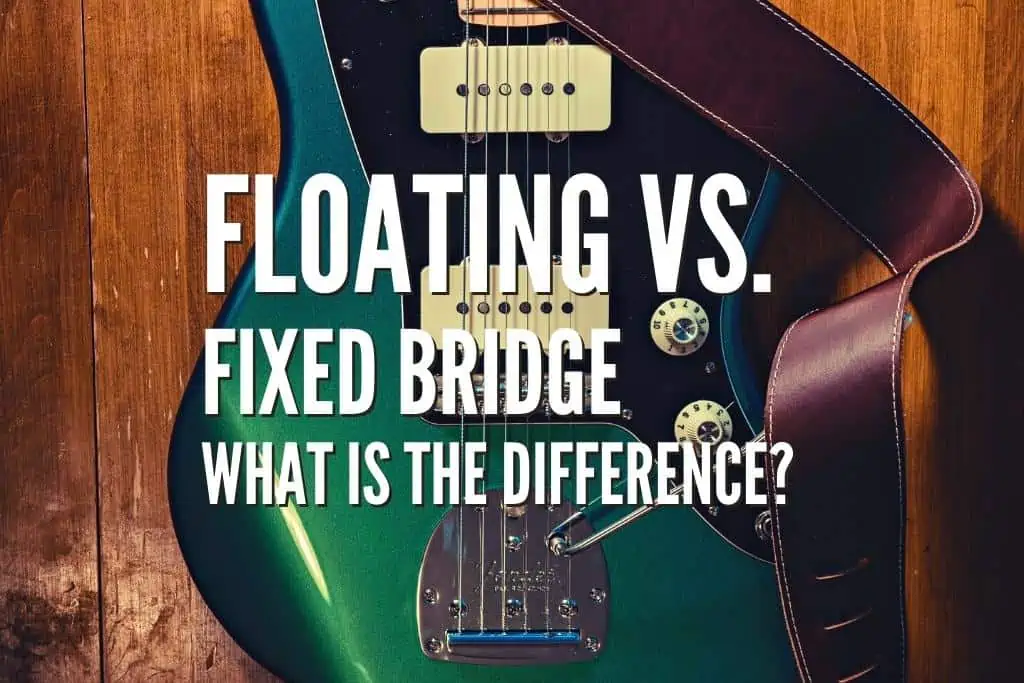When buying a new guitar, not many people, especially beginner guitar players, don’t consider the importance of the guitar bridge and its type. Picking the right type of bridge for you is one of the most important things for buying a new guitar.
But, what is the difference between a fixed bridge and a floating bridge? The main difference between fixed and floating bridges is that the fixed bridges are static and screwed into the body while the floating bridges can move, allowing you to change the guitar’s pitch simply by using the tremolo arm.
Questions about which is better are completely up to each guitarist’s playing style. Having a floating bridge on your guitar will give you more diversity in your playing, but it lacks a fixed bridge’s sustain. The debate of which is better does not end with this. There are many pros and cons to each one of them.
What is A Floating Tremolo Bridge?
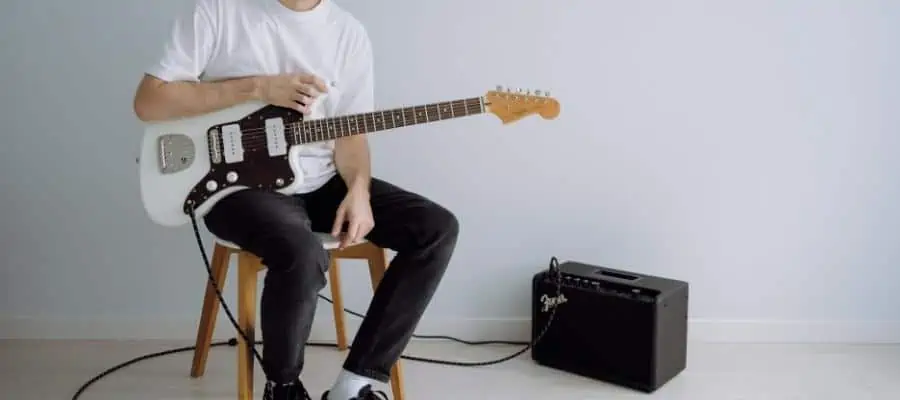
Many electric guitars nowadays have a floating bridge implemented to them. What floating bridge essentially is a guitar bridge that allows you to shift the pitch up and down using the tremolo arm. The reason why it is called “floating” is the fact that it is suspended in the guitar body when the player is not using it.
Today, the most famous floating guitar bridge is “Floyd Rose.” The reason why this guitar bridge is the best one is the fact that it will hold the tune no matter how big of a “dive bomb” you do.
One of the cons of these bridges is that it is not easy to set them up properly. Most people who have little to no experience with these systems will probably have difficulty setting them up for their playing style.
The reason for this is that it has many moving components that need to be properly set up. You will need to understand how to properly set up the springs and their tension and tuning of the strings.
What is a Fixed Bridge?
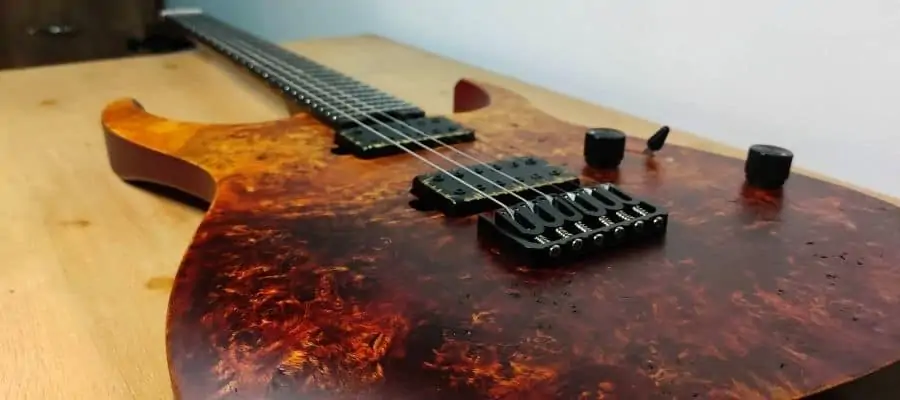
Apart from floating bridges, we also have fixed bridges. These bridges, unlike floating bridges, are fixed to the body of the guitar. In other words, they are held in place with screws. Generally, these bridges are easier to use than floating bridges since they do not have many moving parts and complexity. While there is more than one type of guitar bridge, they all have one thing in common. They make things easy when it comes to setting up the string action, and you would be surprised how many guitarists would go the fixed bridge route.
Having a fixed bridge on your guitar will allow you to set up lower string action making it easier to shred. Fixed guitar bridges have more contact with the guitar’s body, which results in better sustain than guitars with floating bridges. This fact may be the selling point for some guitarists.
Does Guitar Bridge Affect The Sound?
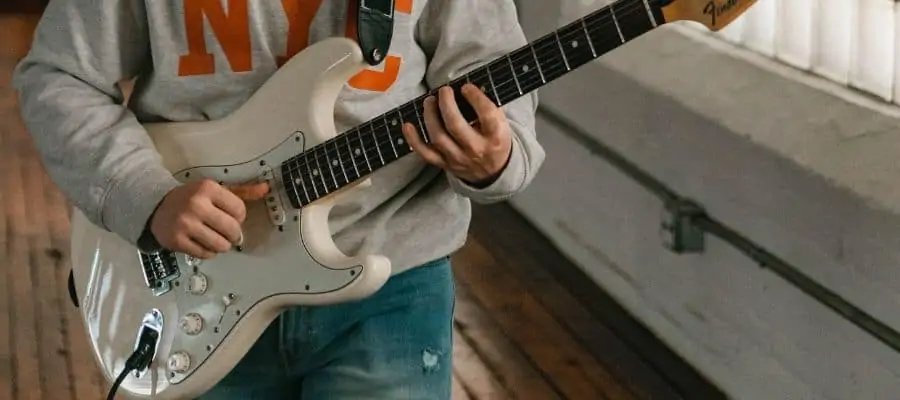
The guitar’s bridge is one of the most important parts of the guitar. It is the connecting point between the strings and the guitar’s body. A guitar bridge that doesn’t sit well on the body will majorly influence the sustain.
Apart from being a decisive point for the sustain, a bridge not set up correctly will make your guitar not as playable as it should be. You will most likely have a problem with action or even, in some cases, the position of the strings.
Guitar bridges are essential for the intonation of the guitar. Almost all the types of bridges have adjustable intonation. A good guitar bridge will keep your strings in intonation for a long time.
What Are The Types of Fixed Guitar Bridges?
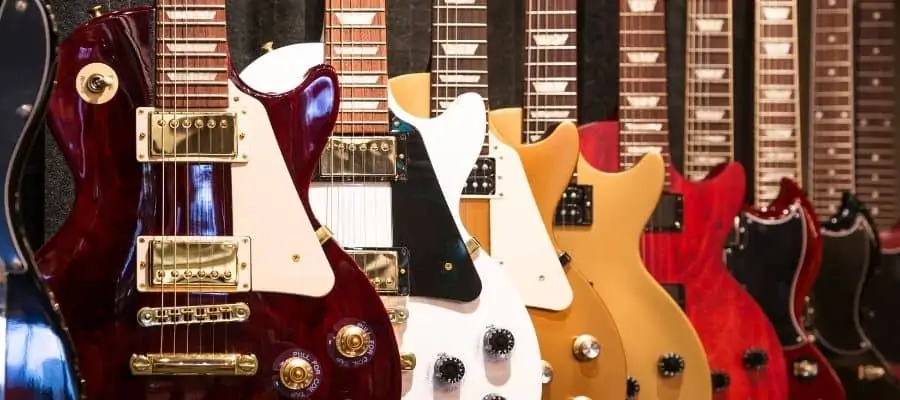
There are three types of fixed guitar bridges: Telecaster guitar bridge, Hardtail guitar bridge, Wrap around guitar bridge, and Tune-o-Matic guitar bridge.
Telecaster Guitar Bridge
One of the first electric guitar bridges ever introduced is the Telecaster guitar bridge. This was the first guitar bridge that was mass-produced. It has a basic design, but it features a pickup mounting ring.
This means that the pickup is not mounted on the guitar’s body. Rather it is mounted to the bridge itself, which results in the twang in a tone characteristic of Telecaster models.
Hardtail Guitar Bridge
The hardtail bridges are among the most famous and frequently used fixed guitar bridges. The reason for this is that they are easy to use and maintain. Once you have set up your intonation and action, you will probably never have to do that again.
This guitar bridge makes changing the strings an easy and fast task to do. Fender was a pioneer of these guitar bridges, and today, you can see them being used by every guitar company.
Wrap Around Guitar Bridge
The wrap-around guitar bridge has been with guitarists for the longest time. On the electric guitar, it was the first type of guitar bridge that Gibson used. It is called the “Wrap Around” bridge because the string goes through the front part of the bridge and wraps back around the saddle. Most of the time, this bridge will come in one solid piece.
While the sustain of these bridges is as good as it gets, they lack the control of the intonation the other bridges have. Sure, the technology has gone far from the first models of this type of bridge, but compared to the Tune-o-Matic bridges, it falls short in that aspect.
Tune-o-Matic Guitar Bridge
Tune-o-Matic is one of the most used guitar bridges. Gibson and their guitar models, such as Les Paull and SG, made this bridge popular during the 1950s. What makes this bridge great is that it allows you to adjust the intonation of every individual string.
Up to this point, guitarists could not intonate their guitar precisely as with Tune-o-Matic Bridges. With its movable saddles, this bridge opened up a whole new perspective of guitar intonation. Tune-o-Matic guitar bridge comes in with a tailpiece, a stop bar tailpiece in most cases.
While you can usually see them on Gibson guitars, these bridges have made their way to modern guitars, which, unlike Gibson guitars, don’t have a tailpiece but rather have the strings go through the guitar’s body. Not only does it look good, but the sustain is also improved.
How Should a Floating Bridge Look?
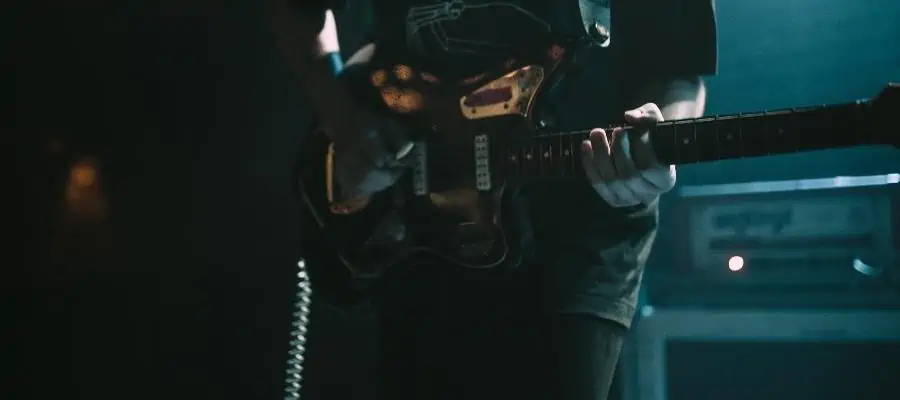
Many guitarists have problems when setting up their floating bridges. They may end up with the bridge being in an odd angle, or their guitar will have too high or too low string action. The bridge should be set up so that it does not jeopardize the intonation and string action.
Doing research before setting up the guitar bridge yourself is not bad. There should be some leeway between the bridge and the guitar’s body but not too much, so you can still use the tremolo bar while the intonation and string height is good.
You should always keep in mind that having a guitar that keeps tune and intonation well is more important than it being able to dive-bomb.
What Is The Advantage Of A Floating Bridge?

One of the most notable advantages of a floating bridge is that it will open up a completely new specter of playing guitar for a guitarist. Apart from being able to dive bomb, you will be able to bend the note upwards with correct adjusting of the floating bridge.
You may wonder how is this different from standard bending of the string? Using the tremolo arm, you will have the ability to put some vibrato or even bend entire chords. Having a floating bridge on the guitar will result in a different playing style from a standard fixed bridge.
Many people will also agree that these bridges are far more comfortable for the hand. Having a flat surface to put your hand on is a great feature of these bridges. With small screws that don’t bite into your hand, there will always be a place for your hand to rest.
What Is The Advantage Of a Fixed Bridge?
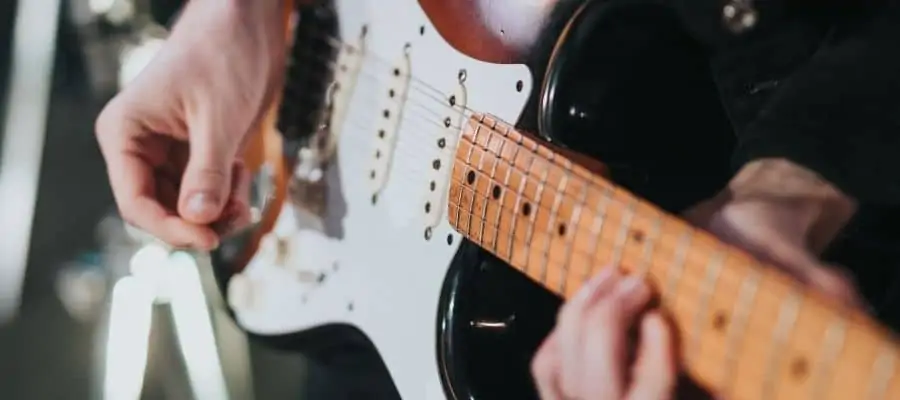
Since these bridges are, most of the time, screwed into the body, they result in great sustain of the sound. But the sustain is not the only great thing about these bridges. Fixed bridges are super easy to use and maintain, which is perfect for inexperienced players who are not too familiar with the physiology of the guitar.
Since they do not have moving parts, they will hold the tune regardless of how hard you push it. Setting up the intonation will take you nothing more than a screwdriver and some time.
What Do The Screws On The Fixed Bridge Do?
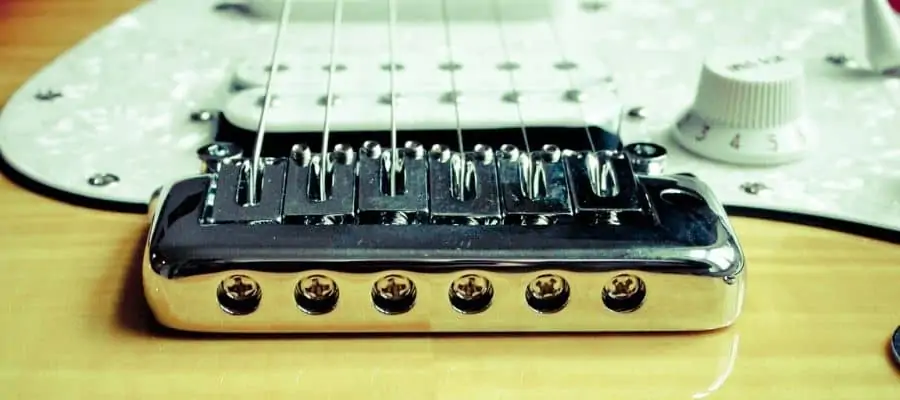
Most fixed guitar bridges will come with a set of screws per string saddle. These screws are essential for setting up the intonation of your guitar.
If you notice that your guitar is out of tune, especially going up the neck, it is time to set your guitar’s intonation. The way you can check this is to use the tuner and play open string (tuned to the pitch) and play the same string only on the 12th fret. If the tunings do not match, you will need to fix the guitar’s intonation.
On most fixed bridges, you will have screws to set up the string length and height. You will need to adjust those screws to your intonation. This can be a long and tedious process, but it is worthwhile doing it in the end.
Should Guitar Bridge Be Flat?
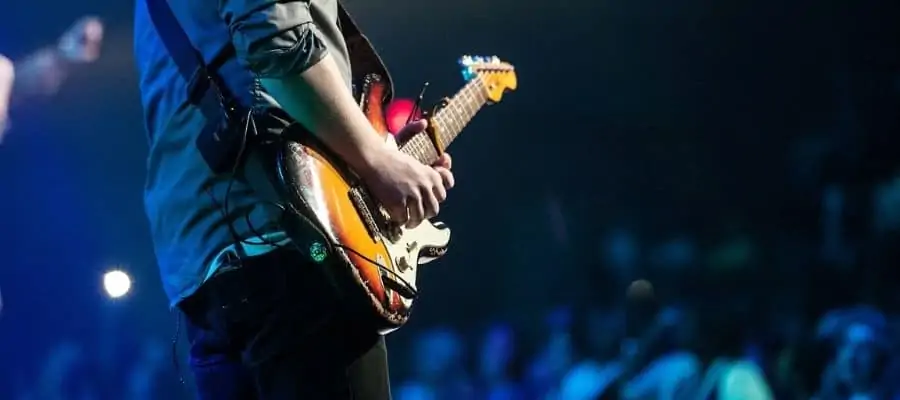
The question of the position of the bridge is completely up to each guitarist. Some like to have it completely flat to the body. This will result in better sustain since the vibrations from the strings are easily transferred to the guitar’s body.
Having the guitar bridge slightly off the guitar’s body, in the case of floating bridges, will allow you to make your note or chord sharp with the usage of the tremolo arm. In the end, it all depends from person to person. Remember that your bridge should not be too high on the guitar’s body since that can cause string action and intonation problems.
How Do You Set up a Floating Tremolo?
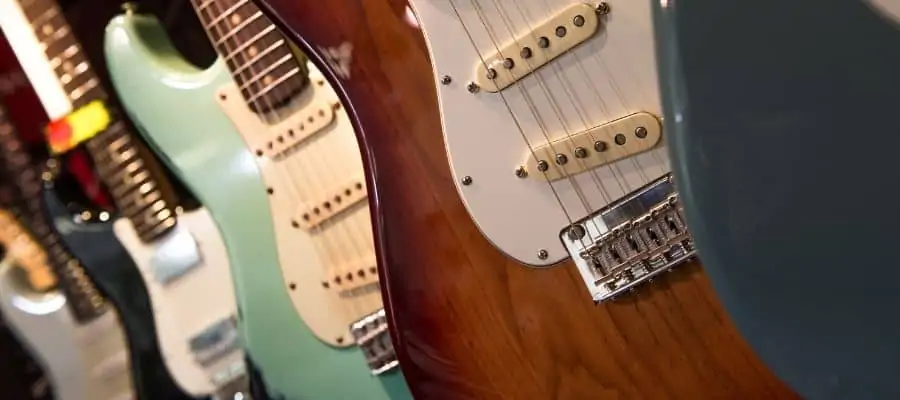
Floating tremolos are one of the best inventions for the electric guitar. Although they are great, they can be a nightmare if not maintained regularly. Setting the floating tremolo the right way is one of the most important procedures for good sounding guitar. As an example, we will go through setting up a Strat-style floating tremolo bridge.
Before replacing the strings, it is essential to have something under the bridge so it can hold it in place. If you do not do that, the bridge will fall into the body. This will most likely give you a headache, so you need to keep that in mind.
After you have replaced your strings on the guitar, you will now need to set up the string action and floating bridge. Almost all of the guitars will have springs holding the bridge on the backside of the guitar. These springs control how much your bridge will “float” and how much leeway it will have.
Usually, when you change the string gauge, you will have to adjust the bridge springs since the tension will be different and the bridge height. Tightening the screws of the springs will bring down the bridge and vice versa. Try to find a sweet spot that suits your style of playing.
With a different gauge of string comes different action. If you, for example, change your string from a smaller gauge to a bigger gauge, you might experience fret buzz on some of the strings. To fix this, you will need to raise the saddle of the string that is causing the problem. Each of the saddles has two small screws used to bring the string up or down. You will need a small Allan key for this.
Also, make sure to check on each fret if there is a buzz. Still, after you have checked everything, you will often notice some buzz on certain frets while playing guitar, so be prepared for future adjustments.
How Do You Intonate a Guitar With a Floating Bridge?
Now, after you have adjusted the height of your strings, you will notice that your guitar does not intonate that well. This brings us to the process of intonating your guitar.
This is one of the most important things for every guitar. If you are not familiar with the meaning of a guitar’s intonation, a properly intonated guitar will have a uniform and in-tune tones across the fretboard. So how do we do this?
Intonations setup is done by adjusting the screws on the backside of the bridge. For each string, you will have one screw. Play an open string and the same string at the 12th fret to see if the string is well intonated. The intonated guitar will have the 12th fret tone in the same tune as the open string.
If your 12th fret tone is flat, you will need to tighten the screw. The same goes the other way. If the string is sharp, turn the screw counterclockwise. Remember not to overtighten or unscrew the screws too much. Small changes should be enough for most of the guitars.
While you may think setting up a floating tremolo is done with this step, you are wrong. This process is a constant battle between each of these steps. You will need to go back and forth until you don’t end up with a perfectly intonated guitar with perfect string height and bridge float. Take your time and take it easy.
Can you Replace a Tremolo Bridge With a Fixed Bridge?
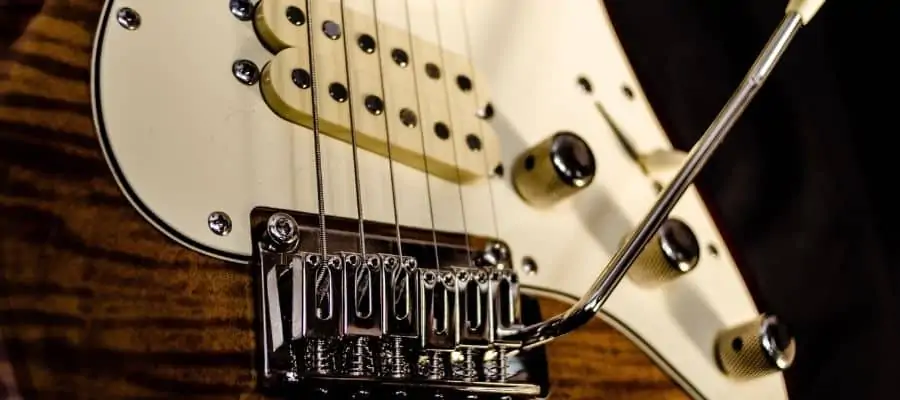
For most guitars with a tremolo bridge, replacing the bridge with a fixed bridge is possible, but it can be quite some work. If you have a Strat-style tremolo bridge, you can turn your bridge into the fixed just by blocking it in place. That would be a quick and painless solution for this.
On the other hand, you have guitars that don’t have the option to do that. Since you will hardly find a fixed bridge that fits into the position of the tremolo bridge, most of the time, you will have to adjust the guitar’s body for the new bridge.
If you do not have experience with woodworking, taking your guitar to a guitar shop is the best option. Sure it will come with additional cost, but making a mistake can ruin your guitar.
Which Tremolo Bridge is The Best?
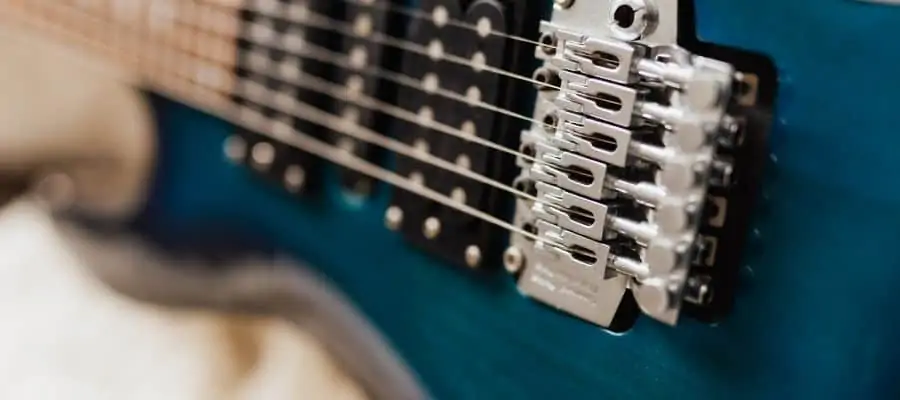
There are many guitar tremolo bridges today, but since the 1980s, the gold standard has been the Floyd Rose tremolo system. This system works so that it will lock the guitar strings in place and still leave you the ability to tune your guitar.
The Floyd Rose tremolo system will withstand almost all of the abuse guitar strings may have while playing the guitar, and it will still keep your guitar in tune.
Apart from the Floyd Rose, the tremolo bridges such as Wilkinson VSVG 6-Point, Bigsby, Kahler, and Strandberg deserve an honorable mention and are worth trying out.
Which Fixed Bridge is The Best?
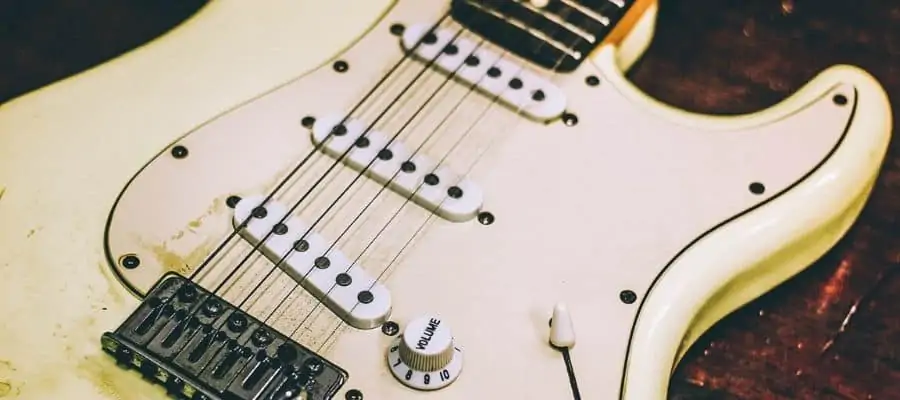
When it comes to Fixed Guitar bridges, they will go toe to toe with each other. Since they are not as complicated as floating bridges, many great fixed bridges exist. One of the most famous fixed bridges is the Hipshot.
The Hipshot is the best of them all. Apart from being great, it is also affordable. This guitar bridge is a go-to option for replacing oversized hardtail bridges. Upgrading to Hipshot will cost you around $100. You will get a great fixed bridge that gives great sustain for this money.
The Schaller Hannes, Ibanez Gibraltar Plus, ABM Modern, and many others deserve honorable mention as great fixed bridge options.
Conclusion
The debate on which is a better, fixed, or floating bridge, completely depends on each guitarist. While the fixed bridges have been longer with us, their popularity did not drop with the introduction of the floating bridges. Both are amazing inventions that shaped the history of music, guitar playing, and guitar making. Both have their pros and cons, and it is up to each guitarist to decide for himself. Who knows? There may be new types of guitar bridges waiting for us just around the corner.
If you found this article useful, you may want to save this pin below to your Guitar board.
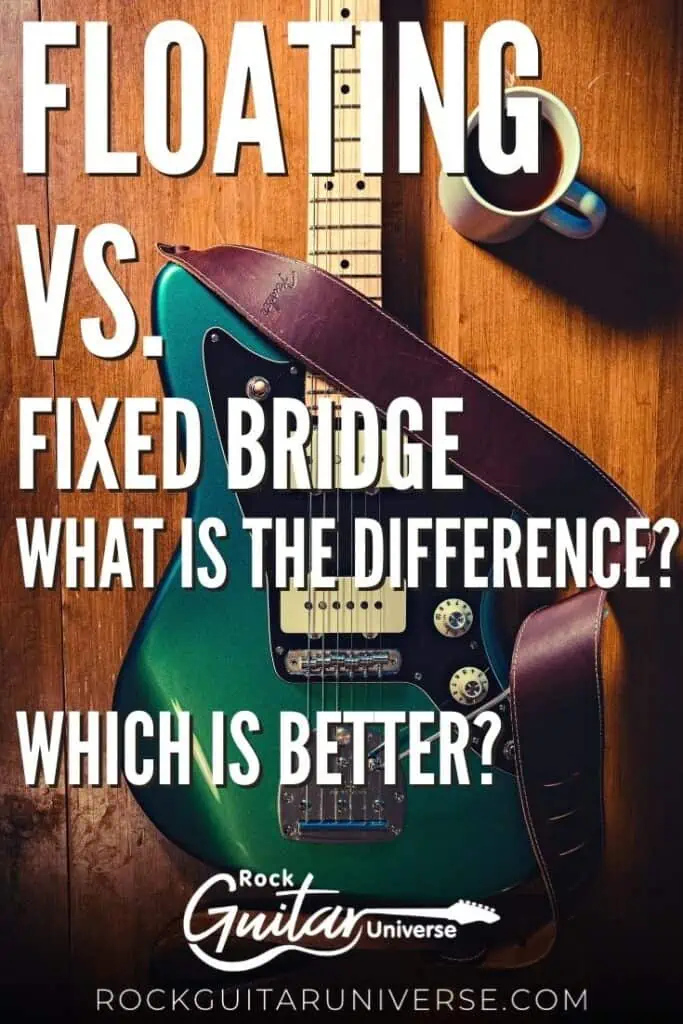
Recent Posts
When learning new songs have you noticed that some of the chord sequences sound really good? But when you tried to come up with your own chord sequence, or as we call it chord progression, you found...
Some guitarists insist on buying an expensive amplifier with their electric guitar. They assume that this is a must for every type of guitarist out there. However, in some situations, this isn’t...

